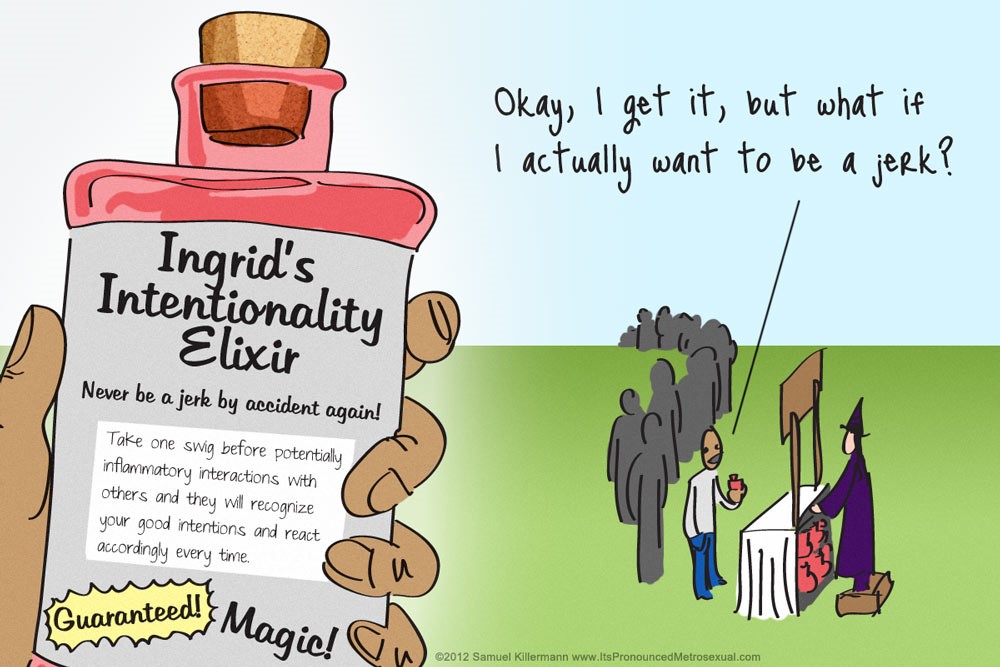You have great intentions, you think you are being clear, you are trying to share important information or solve a problem—and then it happens—the other person takes it in a way you never could have imagined, or even worse, they took it in a way that they are now angry (or angrier), hurt, or counterproductive to what you need. It’s happened to me, and more often than I care to admit.
Does it even matter if you think you are being crystal clear? Misunderstandings are at the top of my “Do Not Like” list. I have at times, and with certain people, developed a process for developing my communications so that I consider, “what convoluted way could this go wrong?” That approach has helped me, but what helps me even more is understanding common reasons why communications we intend to deliver are received and understood differently. Let’s consider a handful of those reasons and how to address them:
1. WE ARE DISTRACTED.
Humanity is distracted. In the opening pages of Brand Intervention, a top selling book that I highly recommend, we learn that,
“According to a recent study by Microsoft, goldfish have an attention span of 9 seconds before flicking onto the next item. We humans now have the attention span of 8 seconds, compared to the 12-second attention span we allegedly used to possess. That’s right. One second less than a freaking goldfish.”
David Brier, Brand Intervention: how to transform your brand into a movement It is likely that while you were communicating, the other person’s mind wandered, or maybe you never really had their attention to begin with. What 9-second portion of what you had to say did they pick up? Ask for the other person’s undivided attention before we begin communicating.
2. WE ARE TIRED.
Fatigue is no joke. We all experience times of stress, overload, lack of sleep, and illness. Timing matters. Consider if your audience is up for what you need to communicate. Communicating complex information or confrontation requires energy from the listeners, and often also requires their participation. Evaluate the energy level before you get started with delivering your communication. Decide if the timing is right.
3. WE ARE ALREADY MAD AT YOU.
Wait, What? How could you be mad at me, I haven’t even started yet? It doesn’t matter. Whatever you might say (or write) to a person who is mad is likely to be taken unfavorably. Emotions, especially emotions with a high charge like anger, cause our blood to rush to our extremities and triggers a flight or fight response. When that happens, our brains do not have everything they need to process or hold on to information effectively.
When someone is mad at you or experiencing a highly charged emotion, it is your job to listen and understand them first. Only when their emotions have settled, which usually happens when they feel like they are heard and understood, can you begin to effectively communicate what you want them to understand. Summon your patience and know the emotional state of your audience before you begin.
4. WE DON’T KNOW WHAT YOU KNOW.
There are instances where we don’t have the same experience, education, native language, or tribal knowledge to truly understand what you are communicating. Here’s a story to help you connect with this idea:
Our daughter, Lindsay, was visiting from college, and we were sharing wardrobe and accessory items. Most of the time she was robbing my closet, but one day, I decided her trendy tall boots would look great with my outfit, so I wore them to work. I texted her, letting her know that I had them on in case she was searching for them. I made some silly remark about not feeling too old to be cool anymore. Lindsay texted me back, “LMAO at you, Mom.”
It was more than a decade ago, and I was still new to all the text lingo, and immediately wondered what I did to make her so upset. I was even a little appalled because some of the things she borrowed from me never got returned, and I was complimenting her taste, her style sense, and letting her know how much it brightened my day. I texted back, “Why are you upset?” Lindsay had the perfect response. “Do you know what LMAO even means, Mom?”
I realized I didn’t, I just replaced “LMAO” with “mad,” because that fit the context of “at you.” You can imagine how much LMAO I did once she told me what it meant. Alleviate tension of misunderstandings with curiosity, and ask, “What do you think I was trying to say?” or “What do you think I meant?” or “What did you hear/understand from my message?”
5. WE ARE STUCK IN THE PAST.
It’s true. We all have baggage. Do you know who or what you are reminding your audience of? You could be reminding them of something unpleasant in their past. Whatever happened in the past might not be yours to solve, and that’s ok, but how do you communicate when this is the problem? If you sense someone is stuck in the past, it is difficult to break through. Try approaching them to understand better as if they were mad or experiencing high emotion. Consider having someone else be the one to communicate with them about topics that they react poorly to, or avoid topics where you cannot find common ground or shared destiny and goals.
This post is not going to solve all of your misunderstandings, but I believe there are some good insights to help you navigate misunderstandings when they occur. If you still struggle, or know you need to communicate about something that is high stakes, please contact us today. We love getting to know your situation and share more about our process for avoiding, “what convoluted way this could go wrong.”
Enjoy Today!
Tina

